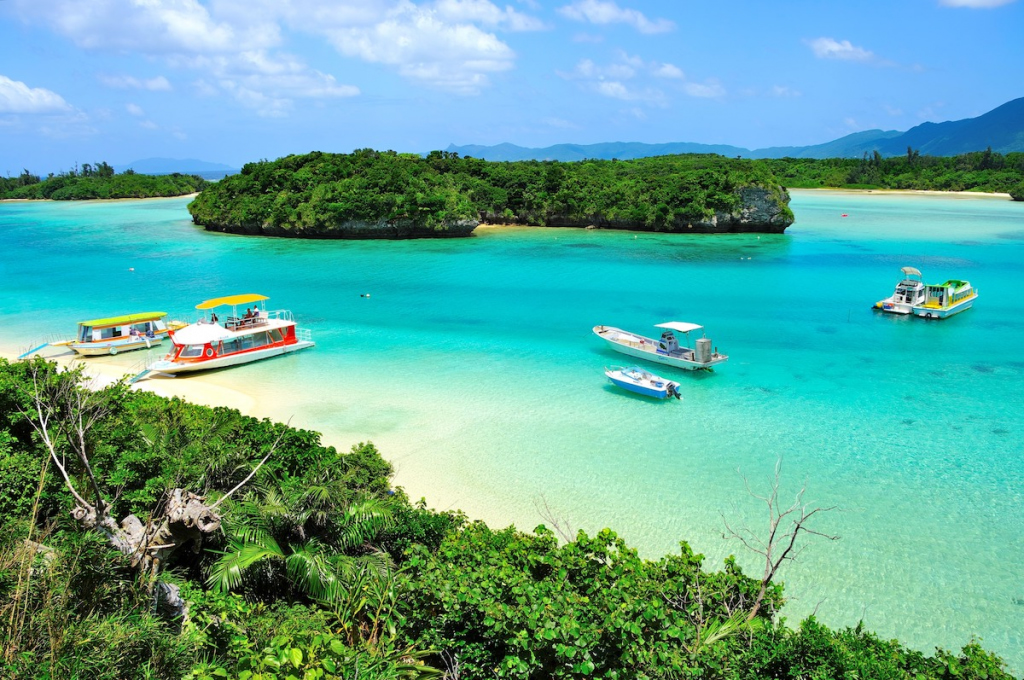Practically sitting on Taiwan’s doorstep, these islands are the tropical getaway you have been longing for. Your first stop, Ishigaki, is accessible via direct flights from Japan’s mainland. Although we saved our ocean-going for the more outlying Yaeyama islands, Ishigaki itself is also chock full of swimming beaches and opportunities for snorkeling and diving.
Visit the Ishigaki-yaki pottery studio and gallery, where internationally award-winning artist Haruhiko Kaneko employs a sophisticated ceramic-glass fusion technique to produce his signature ethereal blue, mimicking ocean chromatics to stunning effect. Each uniquely hand-crafted piece is well-worth a few coins.
Next door is Ishigaki Go-Kart, where you can travel the island in style in a go-kart or tuk-tuk. We took a tour to Kabira Bay, where swimming is not allowed due to strong currents, but where you’ll find postcard-worthy vistas from glass-bottomed boats and a sweeping lookout point.
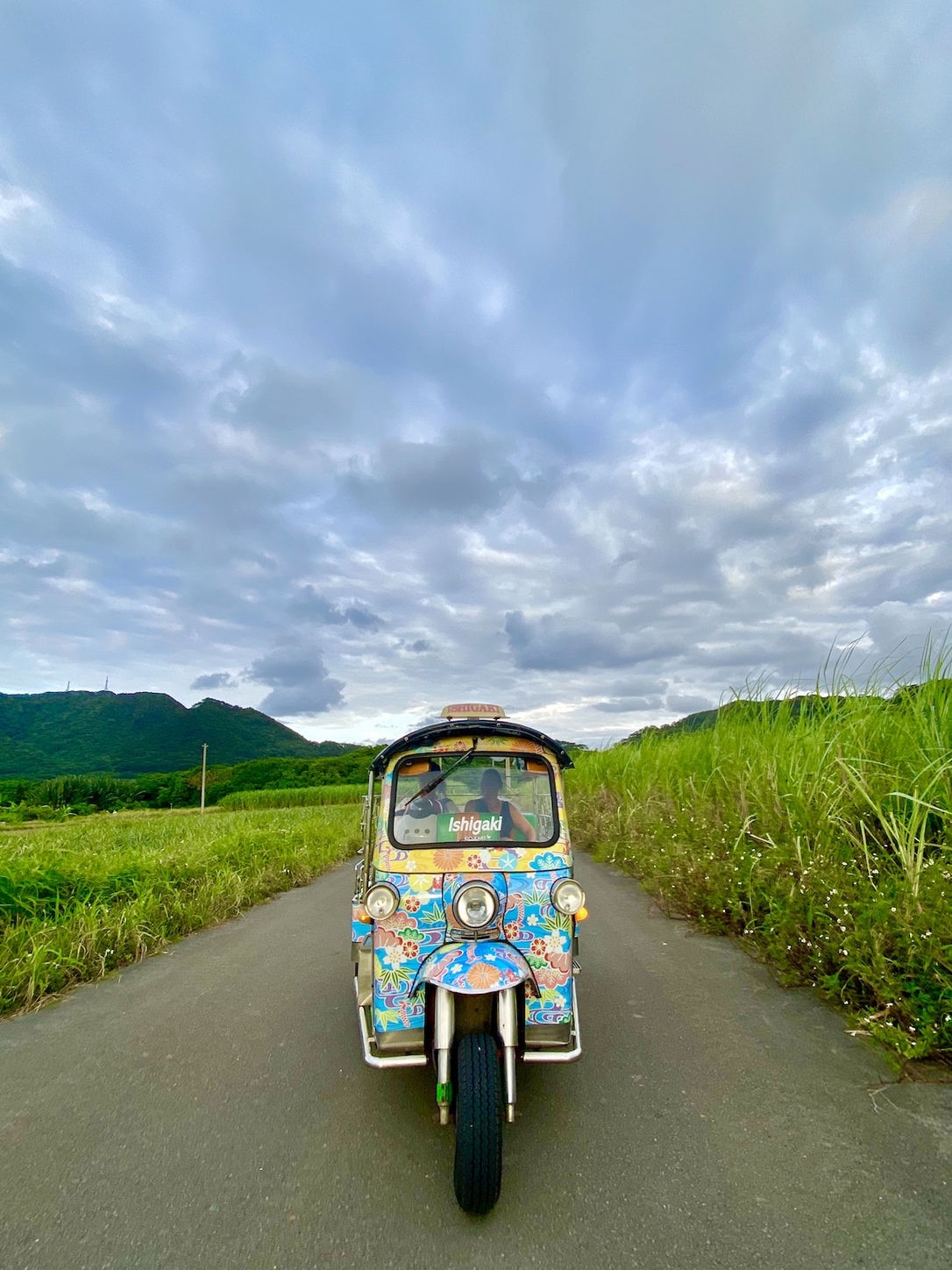
A Tuk-tuk in Ishigaki. Photo by Solveig Boergen
Hateruma: Where cliché meets reality
Take the ferry to Japan’s southernmost inhabited island, where you’ll encounter shades of turquoise (known here as Hateruma blue) at Nishihama Beach, along with soft white sands and sea turtles swimming languidly while munching on seagrass. Bring a sweater to watch sunsets that fade into a sky scattered with stars against the streak of the Milky Way Galaxy.
More other-worldly scenes abound on Hateruma, whose name translates as “edge of the coral,” and which is closer to the Philippines than mainland Japan. At the monument designating Japan’s southernmost point, walk over soft coral sand with ice plants and other native foliage to reach a walkway patterned in the form of intertwined snakes, as icy blue waters smash dramatically against the cove below.
Continue exploring the island by bicycle, where the silence will be broken only by softly blowing winds and the bleating of free-roaming goats. Island treats include Taiwanese-style mango shave ice (try Kukuru Café), and the local brown cane sugar, famous for its rich, earthy flavor.
Also try to procure a dram of awanami, the island’s famed version of the local awamori spirit made from Thai rice.
As with other Ryukyu islands, ancestral and nature worship is intertwined with life here, along with matriarchal history. Designated local women pray inside ogan (sacred spaces) in accordance with the lunar calendar for rainfall and harvests. Should you encounter such sites (which are marked by signage or low stone walls), do not enter them or speak directly with locals while they are engaged in ritual.
Taketomi: Enjoy the slow life
Although our itinerary did not include Iriomote, the largest Yaeyama island, we did visit Taketomi and Kohama islands, both part of the Iriomote Ishigaki National Park.
Taketomi is a lovely place for a relaxed stroll (or a ride atop a water buffalo cart) amidst traditional Ryukyu village architecture, with stone coral walls and rooftops adorned with protective shisa lion-dog statuettes. The island’s beaches are known for their star-shaped sand crystals.
Note that shops and cafés here do not open until 10-11am. We took the first ferry, and as we were processing the very earthly concern that our morning coffee would be hours away, we serendipitously saw a procession of the twice-yearly yuunkai ceremony, which welcomes gods from the ocean onto land.
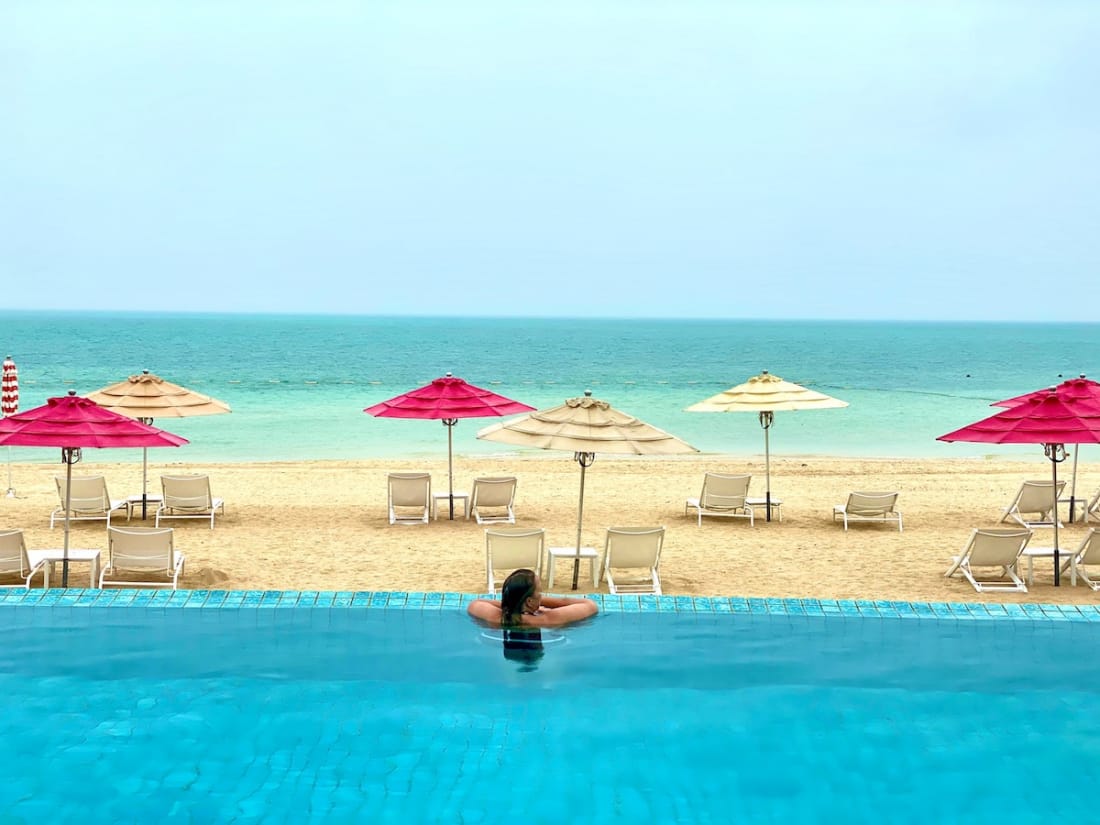
Hoshino Resort Risonare Kohamajima. Photo by Solveig Boergen
Take a resort break on Kohama
Tiny Kohama Island, lying adjacent to Iriomote, has claims to fame that include local granny girl band KBG84 (the figure referring to members’ average age, in a nod to Okinawa’s famed long-life expectancy).
Chill out at one of the island’s resort hotels. The Hoshino Resort Risonare Kohamajima offers superb beach and poolside amenities, including a book café, as well as tours to visit one of the region’s phantom island sandbars.
Kerama Islands and stunning beauty of Okinawa’s southern island
Accessible via a short ferry ride from Tomari Port in Naha, and forming the Kerama National Park, these islands are the closer option for enjoying Okinawa’s incredible sea life. The largest is Tokashiki, but we again opted for the smaller islands of Aka and Zamami, lying further west.
Both islands are excellent places to encounter sea turtles, fantastical corals and other underwater inhabitants. A friendly passerby on Aka island told us to look out for nemuribuka (the harmless white-chip reef shark) while snorkeling.
Enjoy Aka’s chilled-out vibe at Yoshidaya for pub fare, and Bar Yonamine House (inside a traditional-style kominka folk house) for island cocktails. Consider a stay at the Hanamuro Inn Akajima, which features minimalist-style décor, superb meals and hot tubs.
On neighboring Zamami Island, encounter more sea turtles at Ama beach, and enjoy local fare such as jiimame (peanut-flavored) tofu. Zamami is also the best locale in the region for booking winter whale-watching tours, as boats are dispatched from watchtowers that follow individual whales to determine their positioning. The whales pass through the Keramas from December through March en route to Alaska, with peak season around late January.
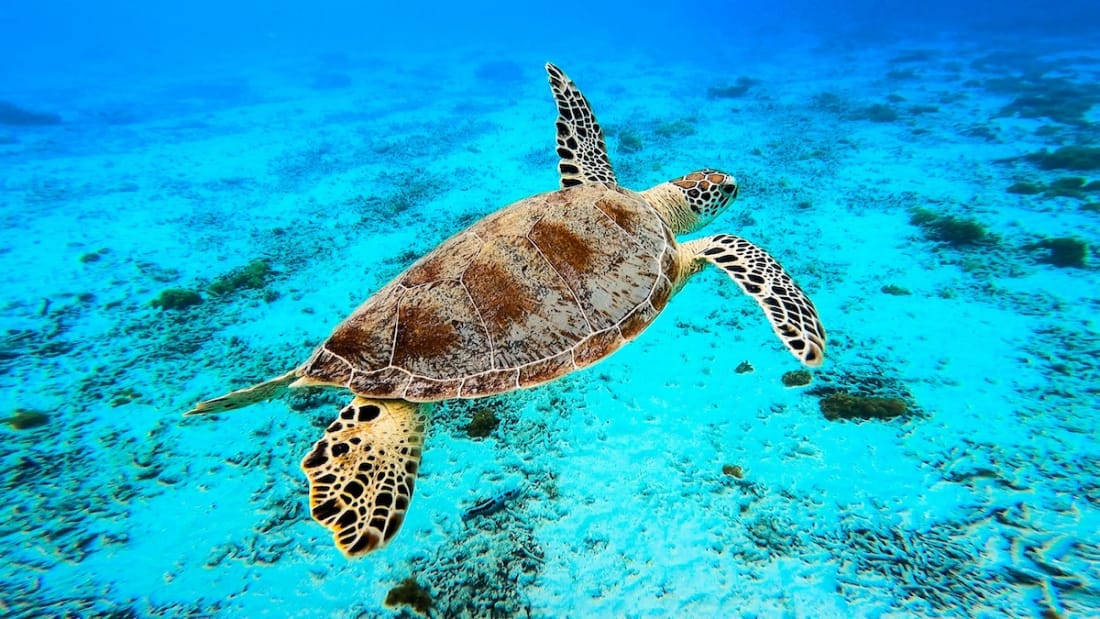
Sea turtle in the Kerama Islands. Photo by Solveig Boergen
The Keramas are where the US fleet of military ships landed in March 1945 before approaching southern Okinawan island. Numerous peace and memorial monuments dot the islands and the southern part of the Okinawan mainland, which was heavily affected by the WWII Battle of Okinawa.
Back on the main island, visit the Valley of Gangala, a collapsed limestone cavern featuring towering banyan tree roots and historically sacred caves, where the skeleton of a 20,000-year-old human was excavated. Adjacent is the Okinawa world theme park, where you will find an intricate underground cave network, along with any local omiyage you could possibly want.
End your stay at the Anteroom Naha hotel overlooking Tomari Port, which features rotating art exhibitions and stunning harbor views. Pick up a bottle of wine, some local tropical fruits and a cheese pack from John Davis (aka The Cheese Guy), who handcrafts exquisite cheeses, for a most memorable finish to your Okinawan adventure.
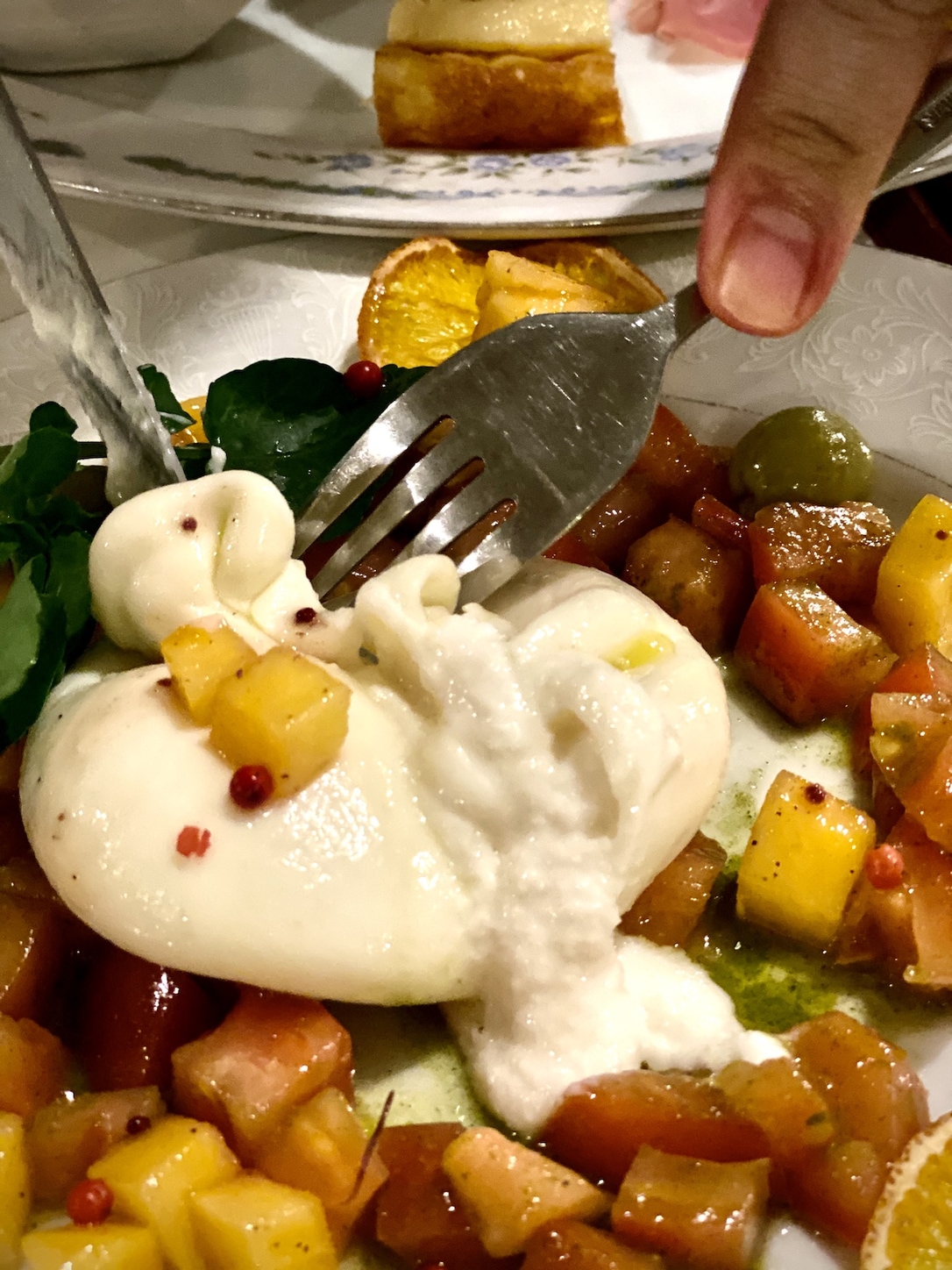
The Cheese Guy. Photo by Solveig Boergen
What To Know Before You Go
Winter swimming and snorkeling is allowed. Wear a light wetsuit. Many diving and snorkeling shops offer rentals.
Closely watch weather reports and updated ferry information, as inter-island ferry cancellations occur in case of typhoons or other inclement weather.
Do not touch or tread on the fragile coral reef, and keep a safe distance from living ocean creatures.
Observe Covid-19 protocols such as wearing a mask, washing and disinfecting your hands and refraining from traveling if you feel unwell.
Updated On January 30, 2023

